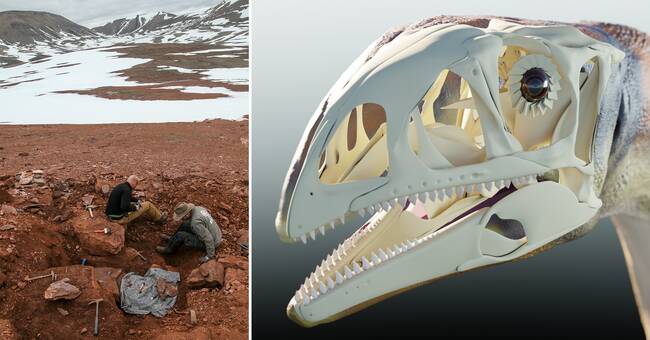A group of international researchers has discovered a new dinosaur in eastern Greenland.
The species has proven to be a herbivore - which gives a new insight into the ancient ecosystem and the evolution of dinosaurs.
- This is the northernmost find ever found by this type of dinosaur, says Vivi Vajda, geologist and head of research at the Swedish Museum of Natural History.
The dinosaur is named Issi Saaneq and means "cold bone" in Greenlandic to pay tribute to Greenland's indigenous peoples.
The study has been published in the journal Diversity.
The forerunners of herbivores
The first remains were found by researchers as early as 1994. The last pieces were excavated in 2012.
By analyzing the skull, the researchers were able to establish that it belongs to a herbivore that is a precursor to the sauropods - the largest terrestrial animals that ever lived on earth.
Sauropods are also called lizard-like dinosaurs and have a long neck that helps them access all the vegetation of the forest.
These dinosaurs evolved into the herbivorous dinosaurs we know today.
There may be fossils in Sweden
Since the dinosaur was just a herbivore, this provides further evidence for an ancient green Greenland - and that the landscape was similar to what existed in Sweden during the same time period.
Sediment from this time period that the researchers found in Greenland can also be found in southern Sweden.
- If we look really carefully, we can probably find remains from Issi Saaneq here too, says Vivi Vajda.

